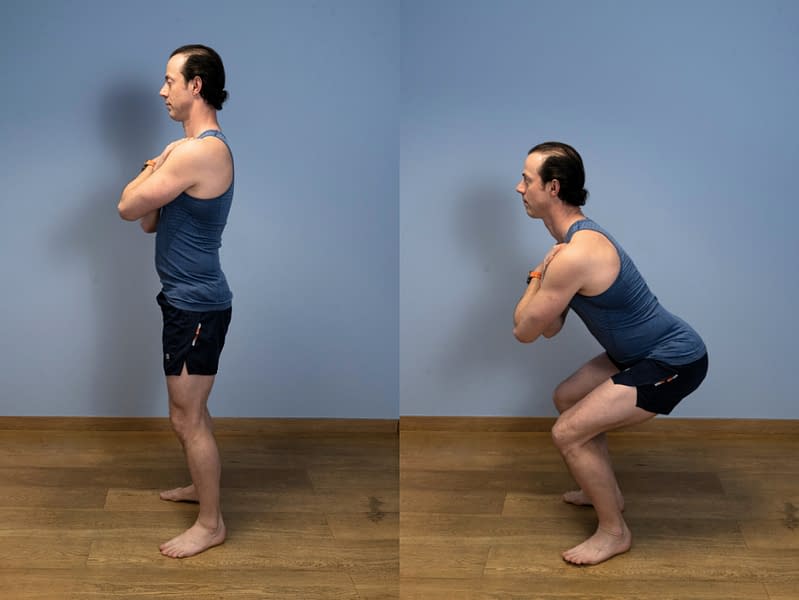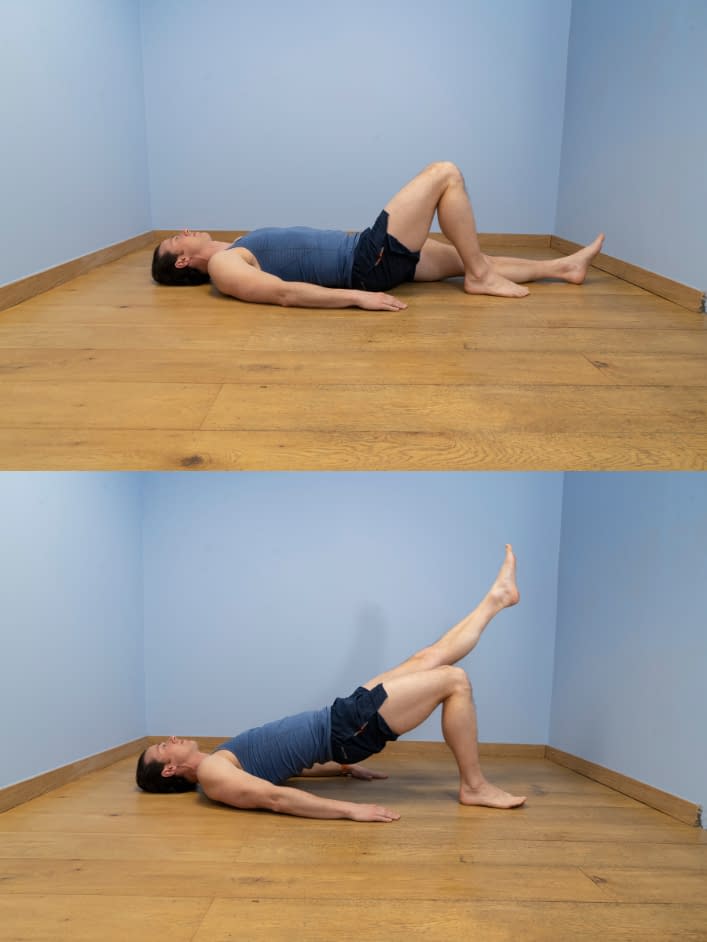Patellofemoral Pain Syndrome (PFPS) Intermediate Exercise Programme
Aim to perform this programme a minimum of once per day unless prescribed otherwise. As with any new exercise, start slowly (repetitions as able) and build up as you are able within the guidelines below.
Pain should not exceed 4/10 whilst completing this exercise programme.
1. Bodyweight squats
- Stand with your feet hip width apart and your arms across your chest.
- Sit back as if you are sitting into a chair.
- At the same time your head should move forwards to keep your balance.
- As you do this aim to keep your back straight.
- Go down as far as you feel comfortable or until your thighs are parallel with the floor.
- Come back up to standing and repeat.
2. Single leg balance - knee bent
- Perform this exercise barefoot or in socks, in a clear space near a wall/stable object and on a flat, non-slip surface.
- Shift your weight on to the affected leg then lift the supporting leg slightly off the floor – maintain a slight bend in the standing knee.
- Look down at the knee and focus on balancing whilst keeping the knee in line with the hip and ankle – use the object/wall to prevent yourself falling.
- To progress, try looking straight ahead rather than down at the knee. To advance further, this can be performed with the eyes closed.
3. Single leg hip bridge
- Lie on your back on the floor or bed with your knees bent at 90 degrees and your feet on the floor and your arms down by your side.
- Whilst keeping the knees in line with the foot and hip, kick the resting. leg out straight so that it is off the floor.
- Push your heels down into the floor to gently lift your hips upwards. Lift as high as you feel comfortable but no higher than a straight line between hips, knees and shoulders – aim to keep the pelvis level throughout.
- Once your hips form a straight line with the shoulders and knees, hold for 5 seconds before slowly lowering your hips back down.
We recommend consulting a musculoskeletal physiotherapist to ensure exercises are best suited to your recovery. If you are carrying out an exercise regime without consulting a healthcare professional, you do so at your own risk. If you have any concerns whilst completing these exercises, please contact a healthcare professional.
More Plans
These are some simple strengthening exercises for the quadriceps and hip stabiliser muscles. These exercises can be performed one to two times per day. It is safe and normal to have some discomfort in the knee, but these are low-level exercises that should be non-provocative. Pain should not exceed 4/10 on your perceived pain scale whilst completing this exercise programme.
- 0
- 1
- 2
- 3
- 4
- 5
- 6
- 7
- 8
- 910
These are some more advanced strengthening exercises that aim to strengthen the muscles in more demanding positions to prepare you for a return to sport or physical activity. These exercises should be performed 2-3 times per week like a gym programme as we must consider at this stage you may be preparing to return, or have even returned, to sport. Pain should not exceed 4/10 whilst completing this exercise programme.
- 0
- 1
- 2
- 3
- 4
- 5
- 6
- 7
- 8
- 910


